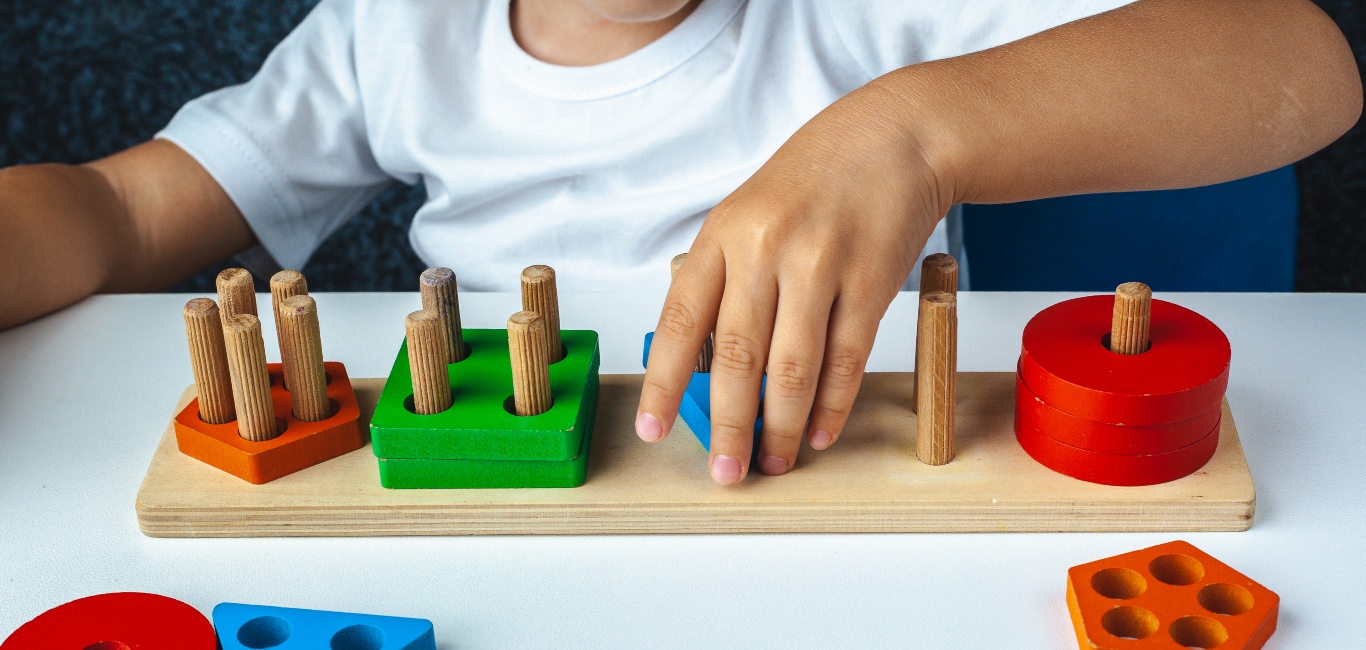
Vedanshi had fallen off her cradle at the age of one. The unconscious baby was rushed to hospital with a swelling in her head. The CT scan revealed that she had brain injury and cortical visual impairment (CVI). She also experienced seizures and was diagnosed with left-sided paralysis.
She was kept under observation for 21 days after being put on ventilator support. Her parents then took her to an ophthalmologist where they learned about the characteristics, strategies, and interventions of CVI, says her mother.
The child had to undergo vision and perceptual skills training, physiotherapy, speech therapy and special education for three years. Her mother continued practicing the same at home.
“Initially we faced a lot of hurdles to make Vedanshi cooperative. However, we see a lot of improvement in her after three years,” she says.
Vedanshi, who is almost four years old, studies in a mainstream school in Hyderabad and continues learning with CVI adaptations.
What is CVI?
CVI is a condition when impairment in the brain signals results in defective vision even if the eyes appear healthy. The degree of impairment ranges from mild to severe. There are various causes for CVI including genetic disorders, reduced oxygen supply to the child’s brain due to prolonged labour, premature birth, or seizures in some children at the time of birth.
While this condition is more common in children, injury to the brain during adulthood may also result in CVI.
Dr Deiva Jayaraman, vision rehabilitation specialist at LV Prasad Eye Institute, Hyderabad, lists the characteristics of children with CVI:
- Preference for unique colours and lights
- Delayed visual response
- Difficulty in viewing distant objects
- Difficulty in sighting and reaching an object simultaneously
- Delayed response time to identify new things and understand them
- Time needed to process moving objects/things
- Inability to read or recognise multiple objects, people, and uneven surfaces like stairs
Experts say that parents often mistake the child’s response to sound as vision. The child turning towards the mother’s voice should not be considered as a visual response, as the right stimulus for the eyes is light.
Diagnosis method
CVI is diagnosed with birth history, interviews of parents, observations and reviews of the child, direct assessment of the eyes, and MRI scans. In addition, vision charts are used to determine the sight of children. Though the condition is not reversible, it can be improved through occupational therapies.
Management methods
“Parents are taught about visual stimulation therapy using flickering lights, merry-go-round toys with light, and colourful objects, while observing the response of the child,” says Dr Aruna Rathakrishna, senior consultant in the department of paediatric ophthalmology and strabismology at Sathyan Eye Care, Coimbatore, Tamil Nadu.
She adds that some children have delayed vision, which is like delay in speech or walking. This condition, called delayed visual maturation, is different from CVI and can be treated through a few sessions of visual stimulation therapy.
Experts say that visual tasks can be performed repetitively with other therapeutic interventions such as sound, touch, smell, and taste. It stimulates multiple senses and eventually improves the processing of the brain. CVI may be a temporary or permanent condition depending on the impact of the brain injury.
Dr Jayaraman adds the following instructions for parents:
- The training should be paired with a functional and meaningful routine
- The adaptations and activities should be designed according to the child’s level. It should not be more or less
- It should be precise and have an intention
According to the American Academy of Ophthalmology, simpler toys are better than complex ones to promote fun and learning. The toys might include high contrasting colours like black and white, balls of different sizes, hanging toys, shape sorters, dominoes with raised dots, and pictorial books to grasp easily. Children with CVI can learn through a touchscreen-based device as it facilitates the adjustment of font size and contrast.
“Children with CVI may or may not have issues with functional vision. They might face difficulties in reading small texts and viewing tiny objects. Wearing glasses will not help in improving vision, because the underlying cause is related to the visual part of the brain and not the eyes,” says Dr Rathakrishna.
Children with CVI need early intervention and therapy to manage their academics. Moreover, the management of CVI requires multidisciplinary approaches from obstetricians, neurologists, and ophthalmologists. Parents should note the changes observed in their children and follow up with the specialists once in six months.
Dr Rathakrishna adds that “80 per cent of our learning occurs through visual memory. Visual impairment in children affects their academic performance and leads to behavioural changes. Therefore, they require special attention from teachers and parents.”
















